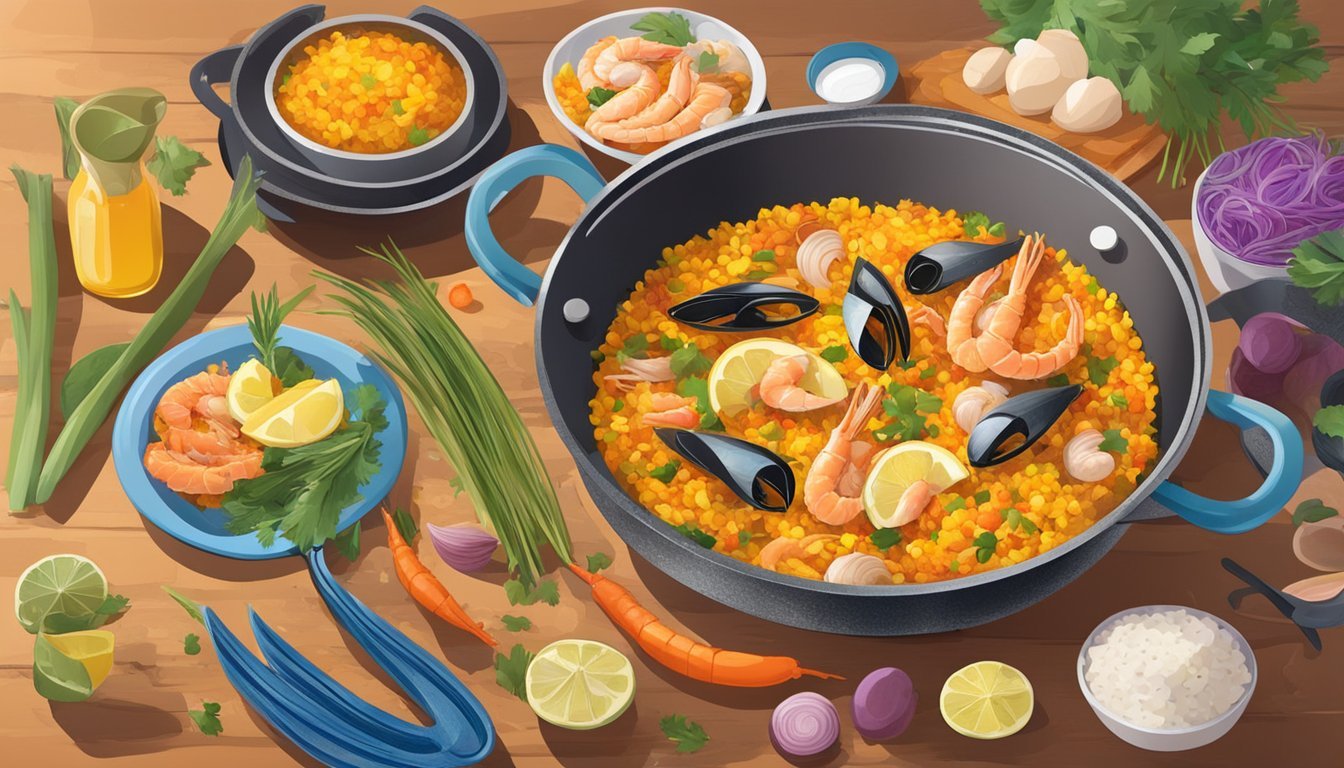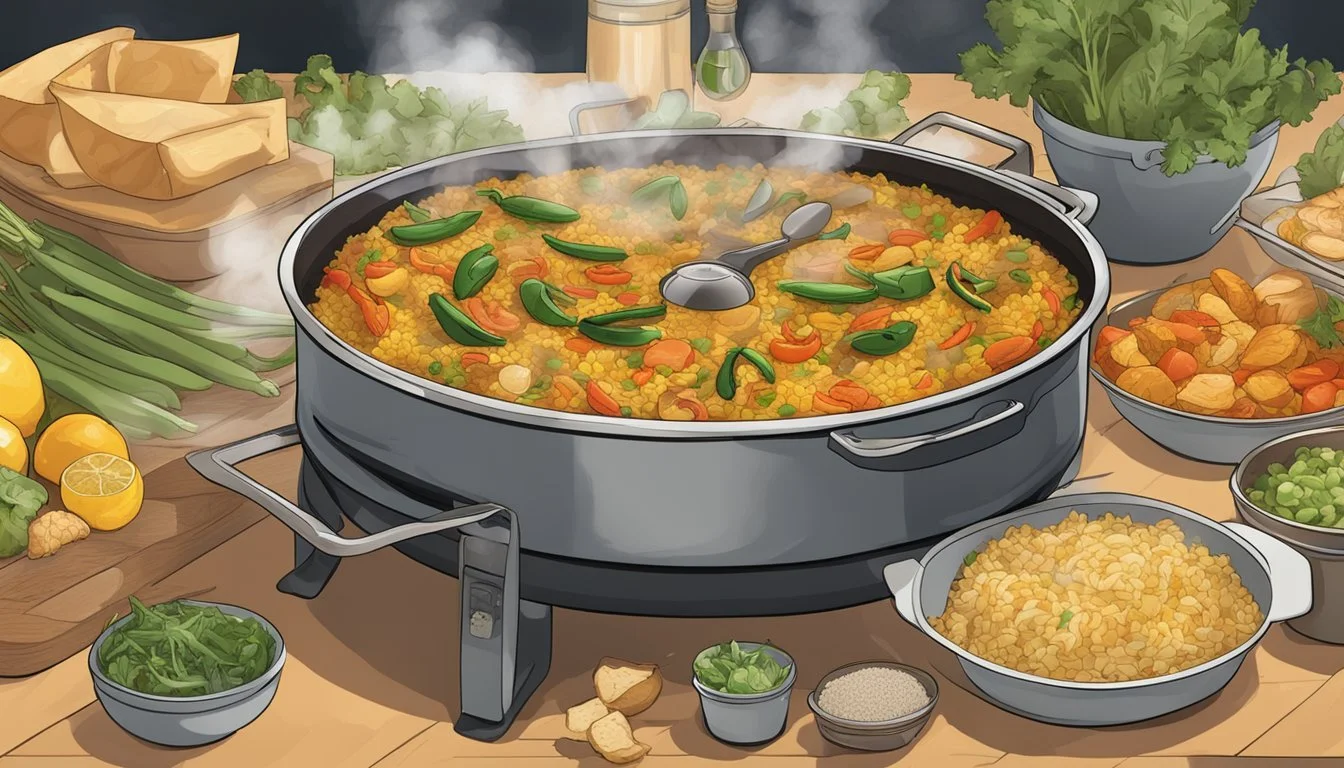How Long Does Freshly Prepared Paella Last?
Understanding Shelf Life and Storage
Proper storage is essential for preserving the freshness and flavor of paella, a classic Spanish dish rich with rice, saffron, a variety of vegetables, and protein such as chicken, rabbit, and seafood (What wine goes well with seafood?). Once prepared, paella should ideally be consumed immediately, as this is when its flavors are most vibrant. However, if there are leftovers, they can be stored in the refrigerator. It is recommended to refrigerate paella within two hours of cooking to prevent bacterial growth.
In the refrigerator, paella is safe to eat for up to two days, although the quality may diminish with each passing day. To maximize its lifespan, paella should be sealed properly in an airtight container before being placed in the fridge. This helps to maintain its texture and prevent it from absorbing any odors. When reheating, it is important to ensure that the paella reaches an internal temperature of 165°F to eliminate any potential foodborne bacteria.
Paella's complex flavors and ingredients require careful handling after initial preparation to ensure food safety and taste quality. As such, one should always be cautious and adhere to proper food storage guidelines when dealing with this beloved and flavorful dish.
The Basics of Paella
Paella, a versatile and communal dish, is deeply rooted in Spanish tradition and features a variety of ingredients that can be tailored to taste.
Historical Roots and Tradition
Originating from Valencia, Spain, paella is a dish steeped in history and tradition. It evolved from farmers and workers' meals cooked over an open fire in the fields and is now central to gatherings, symbolizing family and community. The name itself derives from the Latin word for "pan," reflecting the essential paella pan used in its preparation.
Key Ingredients
The foundation of traditional paella is bomba rice, known for its absorbency and firm texture. Saffron, prized for its distinctive flavor and color, and sofrito—a base made from garlic, tomato, and paprika—form the core seasoning blend. High-quality olive oil is used for sautéing and flavor. While proteins vary, commonly used ones include seafood, chicken, and rabbit. Selection and balance of ingredients are key to an authentic experience.
Paella Variations
Paella has many variations, but the most traditional form is Paella Valenciana. It includes chicken, rabbit, sometimes chorizo, and various beans. Seafood paella may feature shrimp, (What wine goes well with shrimp?) mussels, (What wine goes well with mussels?) or squid, and there are also purely vegetarian options. The versatility of paella means it can cater to a wide range of preferences while maintaining its essential characteristics.
Cooking and Preparation
The cooking and preparation of paella hinge on a foundation of quality ingredients and time-honored techniques. Mastery of these elements ensures the integrity of this classic Spanish rice dish.
Creating the Perfect Sofrito
A foundational element of paella is the sofrito, a fragrant base of aromatics that imparts depth of flavor. Olive oil is heated before adding finely chopped onions, garlic, and tomatoes to the frying pan. They are sautéed until the onions become translucent, essential for imparting rich flavors to both seafood paella and chicken paella.
Achieving Socarrat
The cherished socarrat refers to the layer of toasted rice at the bottom of the pan. After adding rice and stock, one should cook the paella undisturbed, allowing the bottom layer to caramelize without burning. This socarrat is a prized component in paella valenciana and other variations, offering a slight smokiness and a pleasing texture contrast.
Methods for Cooking Rice
Paella rice is cooked differently from risotto or other rice dishes. It requires a specific variety, often bomba or another short-grain rice, to remain al dente while absorbing the stock. The rice is spread thinly over the wood fire or stove-top and cooked in the stock with key ingredients such as seafood, meat, or a mixture, as seen in traditional recipes. The process often entails:
High heat for 10 minutes
Medium heat for 7 minutes
High heat for a final minute
Cooking paella adheres to strict principles for an authentic experience, highlighting the delicate balance of flavors and textures achieved through centuries of tradition.
Storing and Preserving Paella
Freshly prepared paella is best enjoyed immediately but can be preserved for later consumption through refrigeration and freezing while maintaining its flavors and quality. Correct storage is crucial to extend the shelf life and to ensure safety.
Refrigeration Guidelines
To store paella in the refrigerator, it should be placed in an airtight container to reduce exposure to air and moisture, which can compromise its taste and texture. Leftovers should be cooled to room temperature before being sealed and refrigerated. Paella can last in the refrigerator for 2-4 days.
Key steps:
Cool paella to room temperature
Transfer to an airtight container
Seal and place in the refrigerator
Freezing Paella
For more extended preservation, paella can be frozen for up to 2 months. An important consideration is portioning the paella into manageable quantities before freezing, as this will facilitate easier thawing and reheating.
Procedure:
Allow the paella to cool to room temperature.
Portion the paella into airtight containers or freezer bags.
Label the containers with the date before placing them in the freeze.
When ready to consume, reheated paella must reach a safe internal temperature to reduce the risk of foodborne illness.
Reheating Paella
Properly reheating paella can ensure that its texture and flavors are preserved. The key is to avoid drying out the rice and overcooking the delicate ingredients such as seafood or chicken. There are two effective methods: using an oven or a microwave.
Oven Reheating Method
To reheat paella in the oven, one should:
Preheat the oven to 350℉ (175℃).
Place the paella in an oven-safe dish and evenly sprinkle about a half cup of water for moisture.
Cover the dish with foil to keep the steam contained.
Heat for approximately 20-25 minutes, stirring halfway through to ensure even heating.
By using the oven, the paella is heated thoroughly without compromising its consistency.
Microwave Reheating Tips
For a quicker option, reheating paella in a microwave involves:
Adding a small amount of oil to a microwave-safe container, wiping or spraying it across the surface.
Distributing the paella evenly in the container, with no clumps, to encourage uniform heating.
Covering with a microwave-safe lid or wrap, leaving a small vent for steam to escape.
Heating on high for 1-minute intervals, checking and stirring each time until the center is hot.
This method is faster than oven reheating but requires attention to prevent overheating.
Health and Safety Considerations
When preparing and storing paella, particularly with seafood ingredients, it's critical to adhere to food safety protocols to prevent foodborne illnesses.
Best Practices for Seafood Safety
Temperature Control: Seafood in paella, such as prawns, mussels, clams (What wine goes well with clams?), and shrimp, must be kept at safe temperatures. It should never be left out at room temperature for longer than two hours. The optimal temperature range for refrigeration is below 40°F (4°C) to inhibit bacterial growth.
Cooking Seafood Thoroughly: Seafood should always be cooked to the appropriate temperatures—145°F (63°C) for fish and 165°F (74°C) for dishes containing any type of chicken. Proper cooking ensures that harmful bacteria are eliminated.
Recognizing Spoilage
Visual and Olfactory Signs:
Discoloration: Paella ingredients may display changes in color when spoiled. Seafood, in particular, may become milky or dull.
Odor: A sour or ammonia-like smell is a clear indicator that seafood in the paella has gone bad.
Texture Changes:
Mussels and Clams: These shellfish (What wine goes well with shellfish?) should be slightly resilient to the touch. If they feel mushy or slimy, they should not be consumed.
Shrimp and Prawns: Fresh shrimp and prawns should be firm. If they become soft or fall apart easily, they're likely spoiled.
By following these guidelines, one can minimize risks associated with consuming spoiled or improperly handled seafood paella.
Supplementary Information
In this section, readers will find practical advice on how to enhance their paella experience, including how to serve it and what to pair it with for a memorable meal.
Serving Suggestions
Freshly prepared paella should be enjoyed both for its flavors and presentation. For a traditional Spanish paella recipe, it's customary to serve directly from the large pan it's cooked in, which can also help keep the paella warm. An array of ingredients such as chicken, rabbits, vegetables, and sometimes snails can be found in authentic recipes, but seafood is a common star in many variations. Generous garnishes are more than just decoration; parsley adds a fresh, herbaceous note, while peas —whether fresh or frozen— contribute a subtle sweetness and pop of color.
Pairing Ideas
Pairing the right beverage with paella can elevate the dish to new heights. Here are suggestions that complement the wide flavor profile of a typical paella recipe:
Type Beverages Notes Wine Light-bodied white wine or a Rosado from Spain They have the acidity to cut through the richness of the dish. Beer A crisp lager or pilsner These can cleanse the palate between bites. Non-alcoholic Sparkling water or lemonade Keep pairings simple to allow the paella to shine.
When selecting a pairing, one should consider the specific type of paella they've prepared. Seafood paellas often go well with white wines that balance the brininess of the seafood, while meat-heavy recipes might be better suited to light reds or heartier rosé wines.








